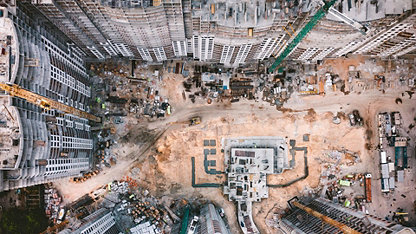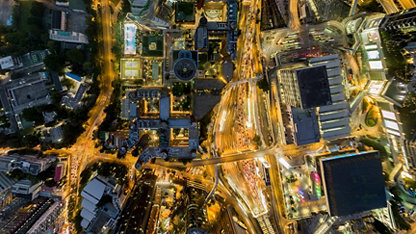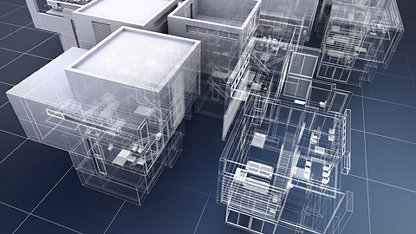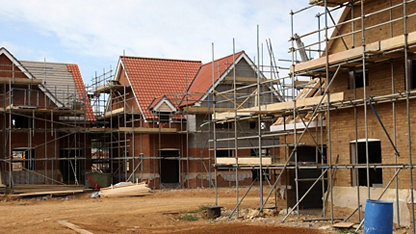For some it is exciting, for others downright terrifying. But whatever your perspective, there can be little doubt that the fourth industrial age is upon us, with all the potential for revolutionary change that entails. It is still early days, but it is already clear that technological advancement will fundamentally change the way we live and work, with artificial intelligence (AI) in particular automating many tasks traditionally done by human beings. So what impact is AI already having on the built environment, and how might it change the sector in the future?
First, it is important to define terms. In a sense, AI has been around for decades. The pocket calculator, for instance, is a classic example of what is known as narrow AI – technology dedicated to performing a single task better than most humans can. General AI, on the other hand, relates to technology that can perform multiple tasks well. And then there is super AI, with machines effectively being able to think and act autonomously.
To date, general AI has had a limited impact on the economy as a whole. However, change is coming, and coming fast. According to Nick Whitten, director of UK research at JLL, annual investment in AI is predicted to reach $250bn by 2025, leading to a step change in the use of the technology by 2030.
In addition to the exponential increase in investment levels, adoption of AI will be facilitated by the roll-out of 5G. "Connectivity is at the heart of it," says Whitten. "We will effectively have wifi-quality connectivity both within and outside the built environment, and it's starting to arrive on our shores and on many shores."
The combination of 5G connectivity and advances in AI will have a profound impact on transport. Most of the big car manufacturers are already partnering with technology firms to develop autonomous vehicles (AVs) that require no input from a human driver. Downtown Phoenix, Arizona, already has a fleet of self-driving taxis. With privately owned cars reportedly sitting idle for as much as 96% of the time, it is clear that AI-driven AVs have the potential to significantly improve the efficiency of how journeys are made, at least within urban environments. That will have profound implications for the design and construction of cities, with far less space needed to park private vehicles.
Man and machine
On the flipside, built environment professionals will need to plan for ever-more data centres – ironically, given its ethereal nature, data still requires a substantial physical presence. "Some of the big data centre owners are saying that you are going to need mini data centres to cope with everything that is coming down the track," says Phil Ratcliffe, managing director at construction and engineering consultant Drees & Sommer UK.
From a transactional perspective, AI is already being used to develop investment strategies. A prime example is US firm Skyline AI, which uses advanced analytics to pull together 200 data sources and 10,000 asset attributes to determine which assets should be traded and when, in order to optimise returns. Such technology has the potential to fundamentally change the way in which investment agents do their jobs, even if they're not cut out of the picture entirely.
"[The technology] looks at market anomalies and different forms of risk and reward," says Whitten. "It's not all AI, but it is using AI to augment human decision-making. In the next five to 10 years you will see that – AI augmenting human behaviour rather than taking over. It might suggest a decision, but the human makes the decision and the human has the ability to change the areas it is exploring."
How is AI changing the built environment?
Similarly, AI is already being used to value properties automatically. That shouldn’t come as a surprise, given that valuers have to adhere to strict rules: AI is particularly adept at automating rule-based activities. However, such tools have the potential not just to augment but to replace human valuations given the huge number of variables they are able to consider, although the selection of those variables is still a human endeavour.
What’s more, AI has the potential to change the role of property agents in the commercial and residential sectors. Back in 2016, for instance, US-based real estate news website Inman ran an experiment where it pitted AI against a human agent in trying to understand buyer preferences. The test was run three times, and in each case the software came up trumps. Again, however, the technology is best used alongside human intelligence.
People, after all, will still need to view a property and negotiate a deal. As James Paine, founder of US investment firm West Realty Advisors, puts it: “The good news is that AI is actually at its most effective when it’s working alongside humans instead of replacing them, and the most successful real estate companies are likely to be the ones that accept this.”
“On the flipside, built environment professionals will need to plan for ever-more data centres – ironically, given its ethereal nature, data still requires a substantial physical presence.”
Face time
It is also increasingly clear that the distinction between a built environment company and tech business is breaking down. The acquisition of American offsite housing manufacturer Plant Prefab by Amazon in October last year is a case in point. "The reason they did that was to be able to embed the Amazon core product of essentially voice-enabled purchasing," says Whitten.
There are already concerns about the way in which voice recognition technology processes data, but in China facial recognition is being used to change human behaviour in ways that could be viewed as downright sinister. As has been widely reported, the Chinese state is trialling the use of the technology in several cities.
"Every citizen goes in and has their photograph taken from 47 different angles," says Andrew Waller MRICS, partner at Remit Consulting in London. "That information is used to track what people do, so if you jaywalk you get a social demerit. And if you get six social demerits, you're not allowed to leave the country and your children can't go to university."
As Argent recently learned to its cost when it was revealed the company was using facial recognition at King's Cross in London, the use of such technology can be highly controversial. Accordingly, landlords and developers will have to think long and hard about how they balance the benefits with the potential reputational damage. However, Waller believes its use is inevitable in a property context, whether that means employers overseeing workers, or shopping centre owners observing customers' movements and behaviours. "Whichever way you look at it, Big Brother is watching you, and this is the future."
“"Whichever way you look at it, Big Brother is watching you, and this is the future"”
Andrew Waller MRICS
Remit Consulting
Three AI applications in the built environment
When it comes to data-based modelling, the machines are making their mark:
Seams
Founded in 2002, Seams emerged from a need for the UK water industry to be able to justify investment decisions to the government regulator. Originally, it was a collaborative research and development project between specialist departments at Sheffield and Exeter Universities that was 10 years in the making. Its purpose is to transform client data into plans to ultimately improve business performance through predictive and prescriptive modelling techniques and outcomes.
Skyline AI
Skyline AI is an artificial intelligence investment manager for commercial real estate. According to the company, it forms partnerships with leading commercial real estate firms to establish next-generation investment vehicles augmented by AI. It was founded in 2017 and is backed by Sequoia Capital, JLL, TLV Partners, Nyca Partners, DWS Group and others. It has offices in New York and Tel Aviv.
Building System Planning
Headquartered in California, BSP recently launched GenMEP, an add-on to Autodesk Revit focused on the mechanical, electrical and plumbing design aspects of building information modelling. Once a 3D model is created on Autodesk Revit, the add-on can automatically design the routing of an electrical system within the building while taking into account the complexity in different building shapes and geometries.
Asset management
AI is also already having a significant impact on the way in which built assets are maintained. Arcadis, for example, is three years into a "digital transformation journey", according to partner Ben Senior MRICS. The consultancy recruited its first chief technology officer in 2016, and now has a team of around 2,000 data analytics specialists in its 27,000-strong workforce. Then, in 2018, the company acquired the Sheffield-based tech business Seams, which specialises in prescriptive and predictive analytics.
The investment is already starting to bear fruit. "We have started to use machine-learning models to automatically tag potholes in roads," explains Senior's colleague Phil Brown. "So, rather than have a manual lookout for potholes, you have an instant machine-learning model that can automatically tag them and log the exact location of the defect using GPS. It's using image recognition and a database of pictures that you've built up to save time and create efficiencies."
Senior adds: "This is where Seams comes into its own. It starts applying prescriptive analytics, so if you're working for an organisation like Highways England you can say: 'This is your budget and these are your goals and this is how you can spend the money to get the best return on investment.' By combining that machine learning in terms of identifying the potholes and combining it with other data analytics, you can start to have a big impact on how assets are maintained."
Arcadis' work isn't limited to road infrastructure. In the US, it is applying the same thinking to the rail network by combining visual recognition technology and AI to inform preventative maintenance works by predicting which trees are most likely to fall on to the track. "Because of the vastness of the country, it was trees falling over on to the track and causing disruption that was creating the greatest issues," says Senior.
"By attaching cameras to the trains and identifying all the trees, you could categorise the trees and use that predictive analytics approach to identify which were most likely to fall over and then do some preventative maintenance. It's made a big impact on reducing disruption to the network."
The application of AI in the built environment industry may still be at a formative stage, but it is already clear that it has the potential to both disrupt and enhance professionals' lives in multiple sectors, from design to agency to construction. Change is inevitable and all involved would be well advised to take note.
- We explore the impact of technology on the built and natural environment sectors. Find out more and sign up to be the first to hear about our next Futures report at rics.org/survtech
- This article originally appeared in the Smart issue of Modus (November-December 2019)






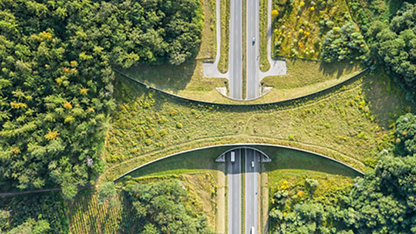
:16-9?$dpp-card-xxl$&qlt=85,1)









